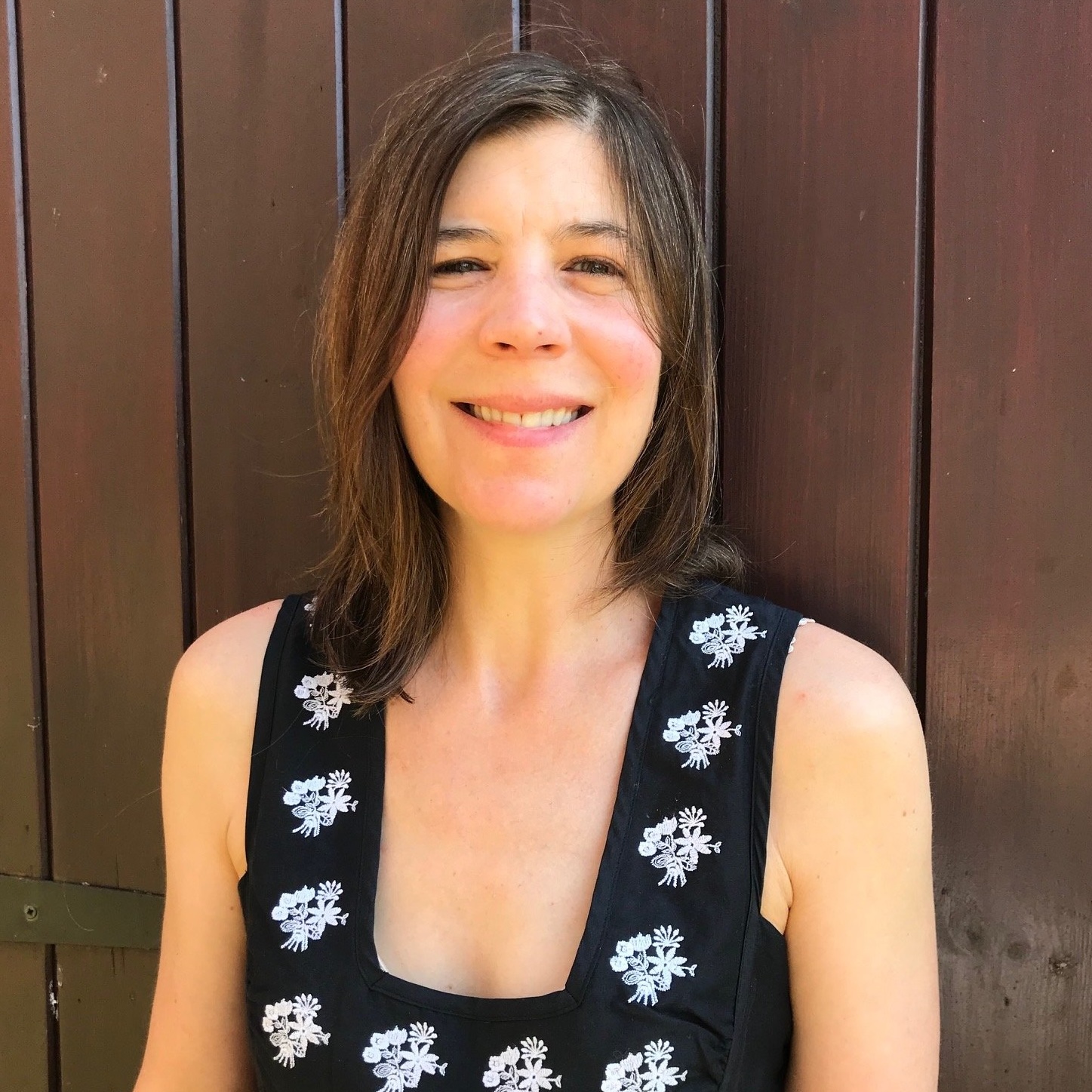'None of this would be here had the tithe barn not burned down that night’: How the terrifying destruction of a medieval landmark sparked the creation of the magnificent gardens of Bledlow Manor
After inheriting the Bledlow Manor in 2018, Lord Carrington has been devoted to the thoughtful renewal and replanting of this historic Buckinghamshire garden. Tiffany Daneff reports, with photography by Clive Nichols.


Gardeners often comfort themselves after a disaster with the thought that the loss of a tree or favourite plant offers opportunities for planting something new. The destruction of such a building as the great medieval tithe barn at Bledlow Manor, which burned down one night in 1967, must have been a truly appalling blow. Yet its loss was the catalyst for the creation of the South Garden and much that followed, as Rupert Carington, 7th Baron Carrington of Upton, explains.
Lord Carrington is standing above a sunken square pool reached via shallow brick steps at each end and edged with brick walls topped with contrasting fresh green beech hedges. A plain and perfectly judged fountain gives life at its centre and blue-painted benches invite one to sit awhile. It makes a deliberately strong statement and one that is surely preparing the visitor for what is to come. ‘None of this,’ he says, ‘would be here had the tithe barn not burned down that night.’
The Caringtons have owned Bledlow Manor since the end of the 18th century, but none of them lived here until Lord Carrington’s parents, Peter Carington, 6th Baron Carrington, the distinguished politician, and his wife, Iona, moved here in 1946. The manor was built in 1647, added to in 1700 and yet again in 1802. To begin with, they shared the house with the tenant farmer. ‘There was no garden then and cattle grazed where the lawn is now,’ the present Lord Carrington says, referring to the lawn between the manor and its walled garden, the oldest surviving part of the present 12 acres.
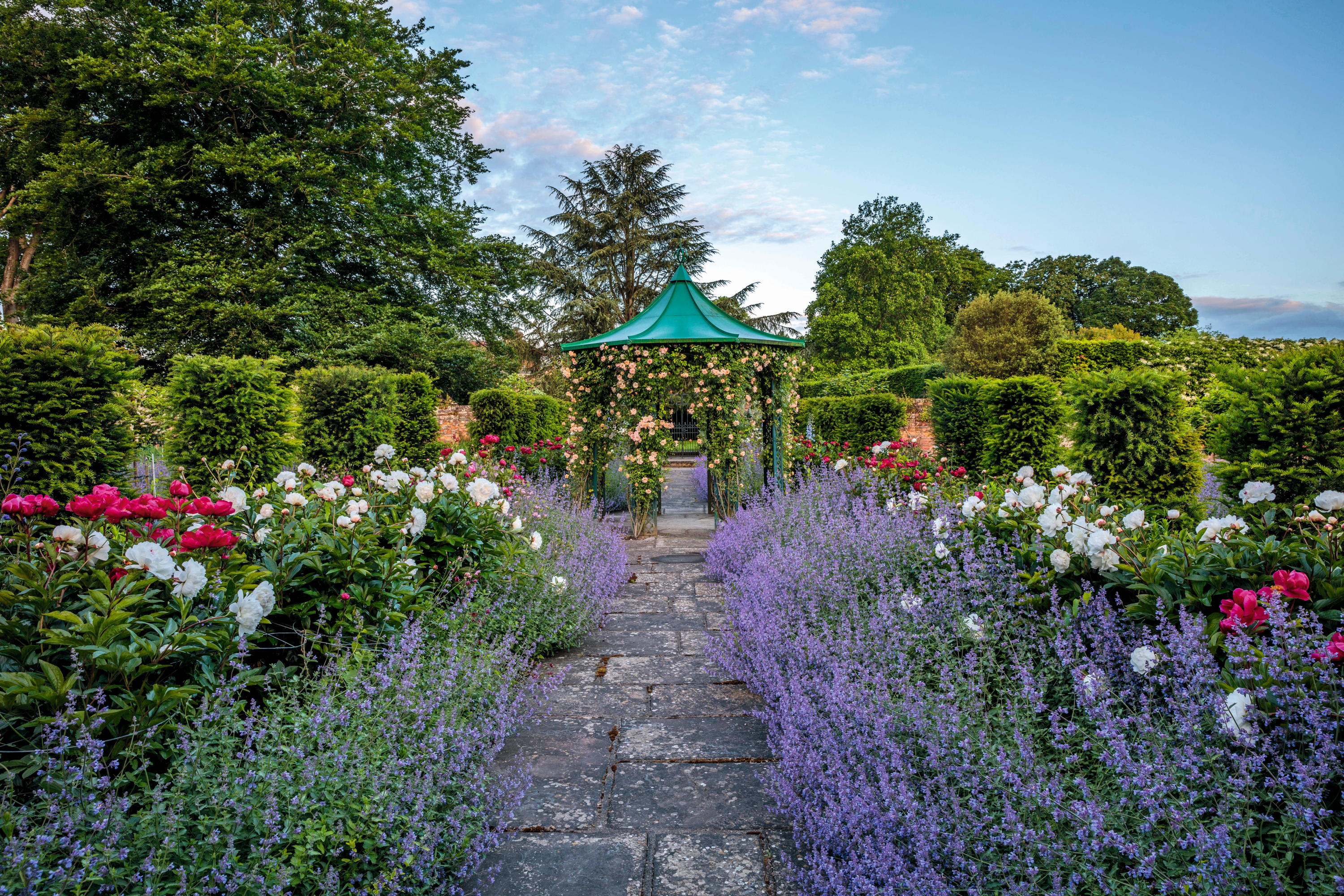
Paths in the walled garden at Bledlow Manor are lined with Nepeta racemosa 'Walker's Low', with roses and peonies on the left and Rosa 'Phyllis Bide' climbing the central pavilion.
The Caringtons made the best of that devastating loss by engaging the help of the designer Robert Adams. He devised a plan that successfully incorporated the awkward variation in the levels of the site and brought a sense of unity between the red-brick manor house and the several large agricultural buildings around it by employing brick for the new walls and paths. The garden has some views out to the Chilterns, but his design focused mainly on the buildings — which include a handsome 18th-century red-brick granary raised on its original staddle stones — adding beech and yew to divide the garden with hedges and pleached avenues.
The work was completed in 1969 and has weathered well, the brick softening with age, yet still delivering a powerful presence. As part of a major programme of renewal that Lord Carrington began after inheriting Bledlow in 2018, all the hedges planted in his parents’ day are gradually being taken back to their original design size, thus reinstating Mr Adams’s intended views of the manor and its farm buildings.
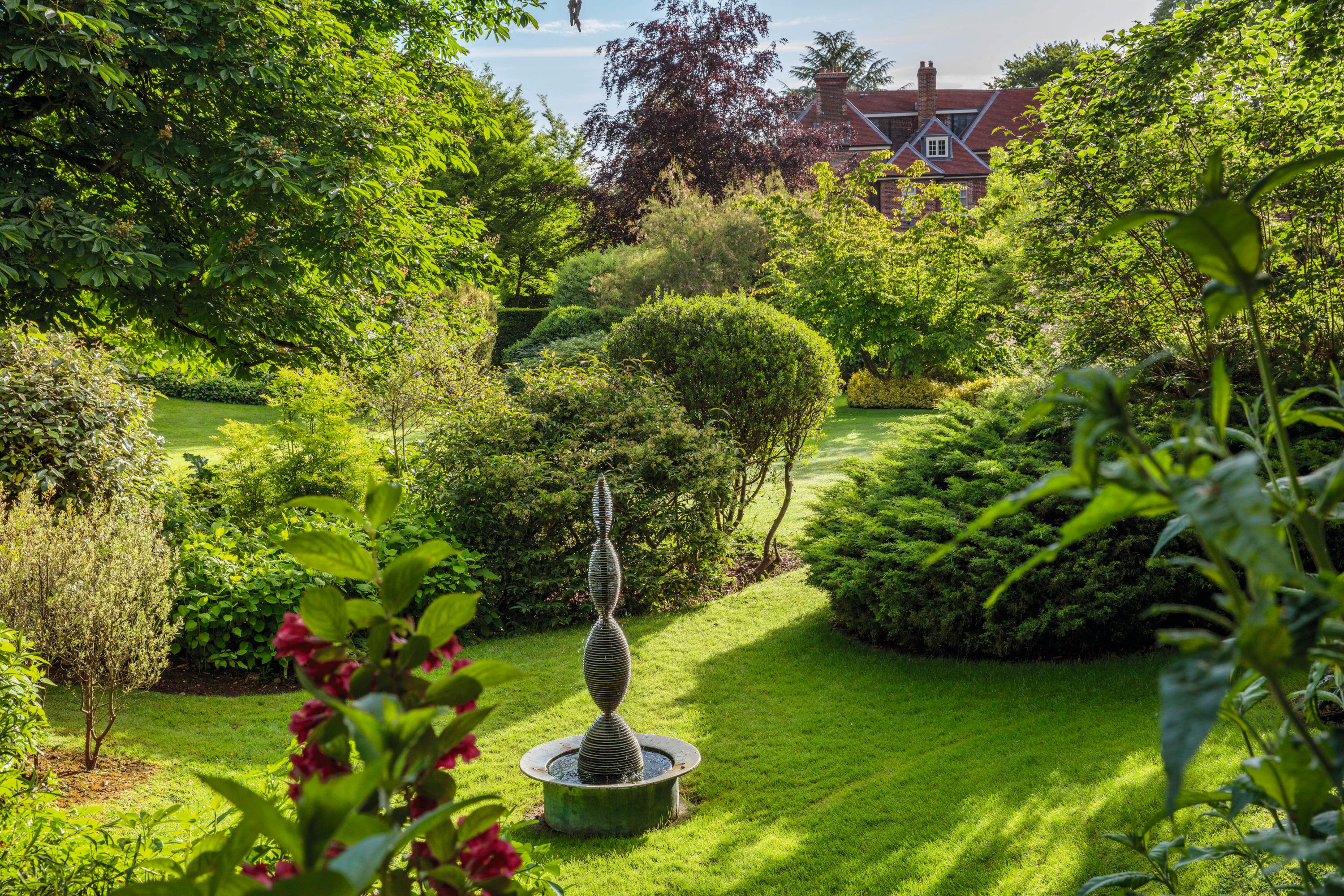
A water sculpture by Barry Mason. Shrubs such as elaeagnus, Hydrangea arborescens ‘Annabelle’ and generously planted island beds ensure that you can only see one work at a time.
Lord Carrington grew up at Bledlow and knows every shrub and tree. Indeed, he is often to be found working in the garden or, as Mark Thompson, Bledlow’s head gardener puts it, ‘doing overtime and extra time’. In total, there are two full-time and three part-time gardeners. All needs to be kept in order for the 10 or so groups that visit each year, as well as the openings for charity and for the National Garden Scheme. Bledlow Manor also hosts an annual rare-plant fair.
To help with the task of replacing and updating the planting throughout the garden, much of which was past its best, Lord Carrington sought the advice of the plantsman/designer Sean Walter of The Plant Specialist nursery in Great Missenden, Buckinghamshire, who has been working with the team here since 2019.
Exquisite houses, the beauty of Nature, and how to get the most from your life, straight to your inbox.

The gardens at Bledlow Manor have been cared for over generations. This black and white photograph shows the gardens as they were when Country Life paid a visit in 1987.
The terraces beneath the north front of the manor that overlook the lawn have been very successfully replanted with his help to provide year-round shape and interest from reliable subjects such as Mahonia ‘Soft Caress’, hydrangeas, the evergreen Japanese forest grass Hakonechloa macra, the white Japanese anemone ‘Ruffled Swan’, a pretty pale pink-tinged white Japanese quince and a Daphne bholua ‘Jacqueline Postill’.
A new brick planter has been built on the northside of the lawn to replace a grass bank and planted with amelanchier, magnolia Stellata Rosea, deutzia and several bushes of the repeat-flowering English shrub rose ‘Olivia Rose Austin’. At its centre, Lonicera ligustrina var. yunnanensis ‘Baggesen’s Gold’ is being trained through a wire frame shaped like a griffin (which appears on the Carrington coat of arms), a project that had first been tried and abandoned by Peter Carington. ‘I found the shape in a shed,’ says Lord Carrington, ‘and thought I’d move it here.’
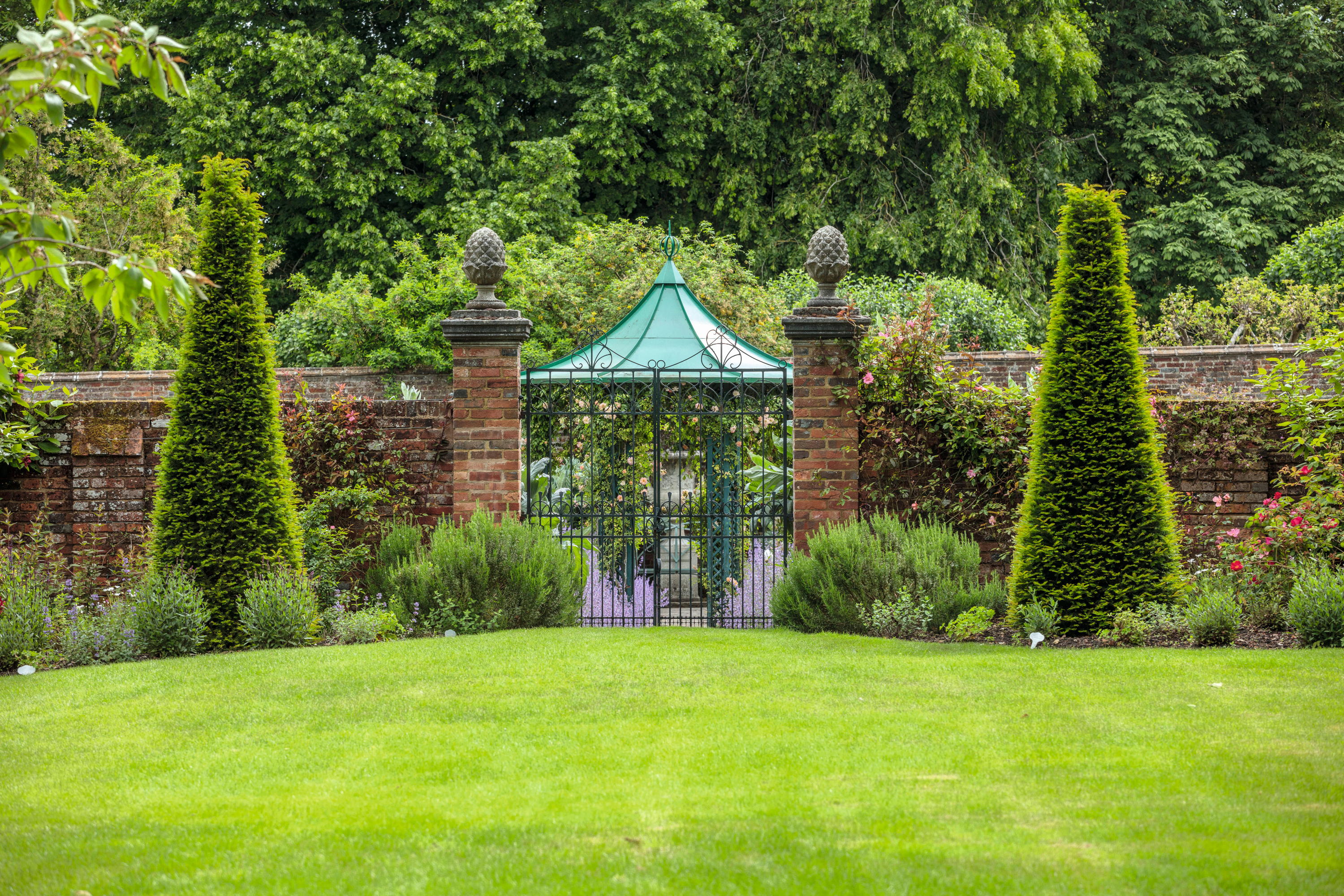
The entrance to the walled garden, the oldest surviving part of the 12-acre gardens at Bledlow Manor. When Lord Carrington’s parents, Peter Carington, the distinguished politician, and his wife, Iona, moved into the manor in 1946, cattle still grazed on this lawn.
On the far side of the lawn, three formal reflecting ponds are set in generous brick borders, clearly the work of Mr Adams, who, after completing the South Garden in 1969, returned to help rationalise the area to the north east of the manor.
As well as the reflecting ponds, he created two long, low brick-edged raised planters with chaenomeles against the wall, with box balls, agapanthus, iris and heuchera below. His most significant contribution, however, is the Sculpture Garden, created from scratch in 1990, which makes up the western edge of the garden. The entrance to this is through a small opening in another yew hedge, which gives onto a striking arrangement of 10 yew-edged parterres that radiate out to a curved hedge forming a semi-circle.
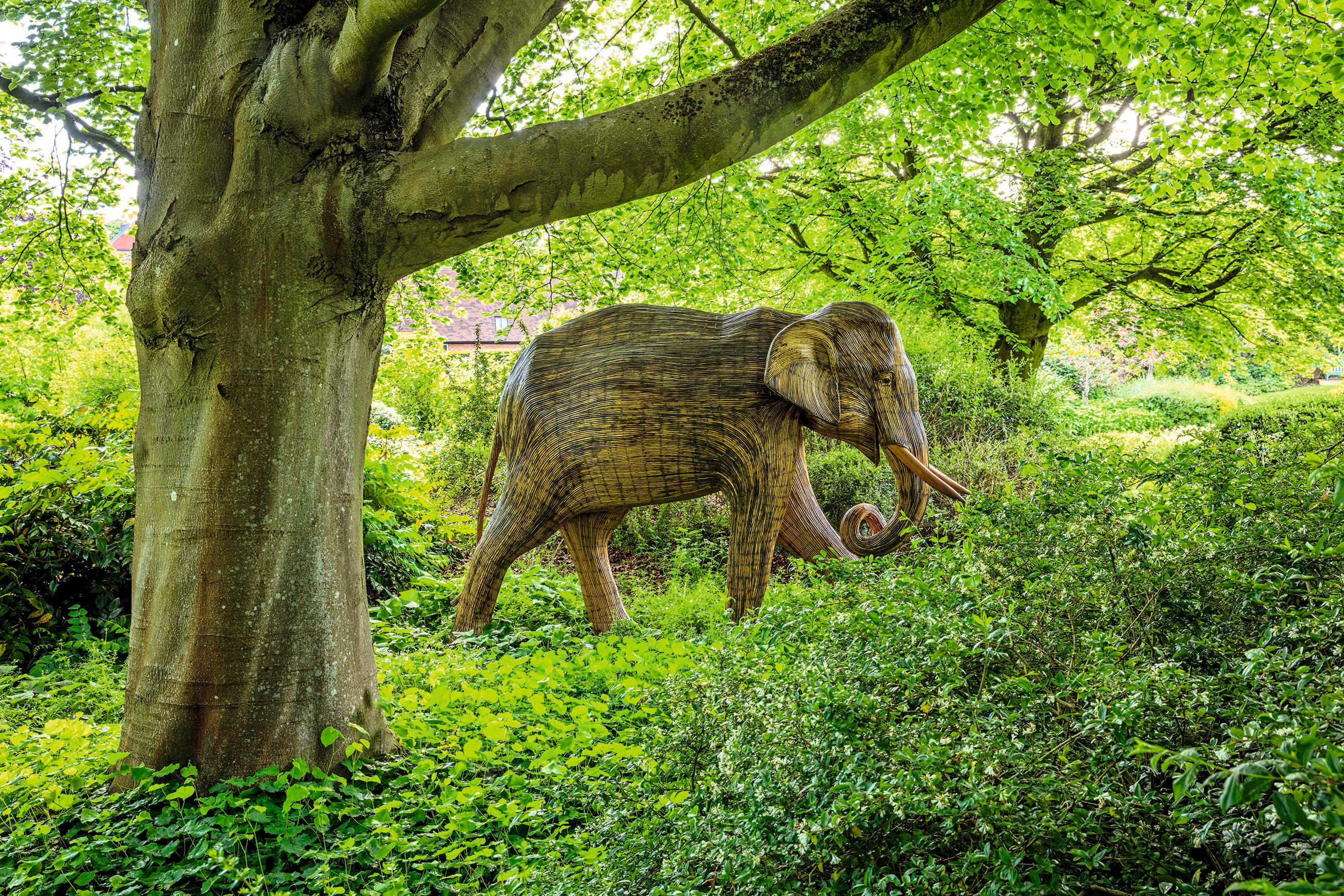
A sculpture, Primitive Form by Marzia Colonna, sets the scene for the sculpture garden beyond. Modern and contemporary works are displayed here among deeply curved beds, providing secret spots to display the works. Trees and shrubs form the backbone of this garden with mature limes and chestnuts on the upper slopes from where you can look down over newly revealed pieces. Works by, among others, Peter Randall-Page, Saidi Sabiti, Charlotte Mayer and Paul Vanstone are arranged among an equally interesting selection of plants, so there is always something to draw the eye. There’s Xanthoceras sorbifolium with its pretty white flowers in late spring and a mature Rosa ‘Cerise Bouquet’, which gives one glorious burst of pink flowers in summer, but, says Lord Carrington, is horribly prickly. Parrotia persica turns a rich red in autumn and in winter there is a lovely view through the trees to the 12th-century flint-faced walls of Holy Trinity, Bledlow.
It is a garden full of the unexpected, just as its opening vistas promise. This is largely because of the very different character of its several parts. The walled garden remains very much a traditional kitchen garden, with beds filled with vegetables, cane fruits and cut flowers. Paths are edged with Nepeta racemosa ‘Walker’s Low’ and Iona Carington’s peonies still bloom against the walls. The Snail Garden — planted in memory of Lady Carrington with all of her favourite plants — is a mass of roses in summer, notably ‘Phyllis Bide’ and ‘Ballerina’, and is dominated by a sculpture of a snail, ‘her least favourite garden pest’.
There’s a very different atmosphere, again, in the Coracle Garden, one of three garden rooms designed by Mr Adams. This, the largest of the three, gets its name from the William Pye bowl fountain that stands at the centre of this square garden. Currently a work in progress, it promises much. The spot is hot in summer and dry in winter, says Lord Carrington, who is replacing those plants that have come to the end of their lives with mainly Mediterranean species that will tolerate such conditions. Columnar cypress add to the atmosphere and in place of the many roses that have been removed are lavenders, including L. intermedia ‘Phenomenal’, rosemaries, such as Salvia rosmarinus ‘Sissinghurst Blue’ and S. rosmarinus Prostrata Group, Phlomis italica, the hibiscus-like Anisodontea ‘El Rayo’ and several spectacular indigofera, including I. howellii, together with shrubs such as Callistemon leavis (bottlebrush), Myrtus luma and Loropetalum chinense.
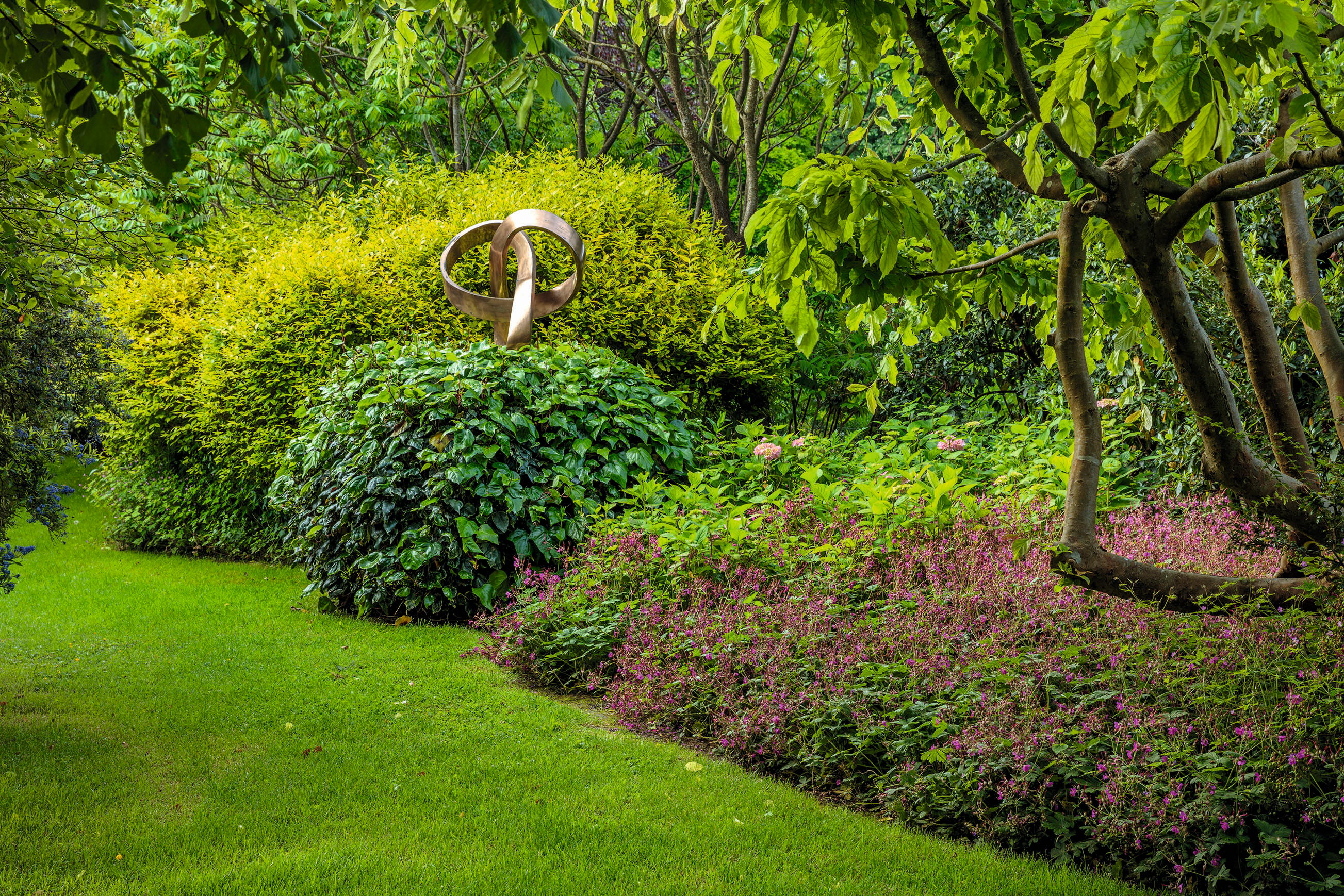
When you consider the status of the Manor Gardens — it is one of the few important gardens made in the 1980s — its variety and the care with which it is made and maintained it is no surprise that it was selected as Judges’ Choice for the Historic Houses Association Garden of The Year Award in 2023.
Yet there is still more: across the road from the manor lie the Lyde Gardens. Created from three former watercress beds and designed by Mr Adams, the dramatic water gardens, hidden in a deep declivity with trees reaching more than 100ft to the light above were completed in 1988 and are opened daily to the public. Gravel paths and wooden duckboards lead over and beside the Lyde — a tributary of the River Thame fed by 25 springs — past flat plates of Darmera peltata, gunnera, colourful astilbes, ferns and a huge group of rodgersia. It is an unforgettable spot and almost Japanese in its sense of spirituality and place.
Bledlow Manor, Buckinghamshire, will host the Rare Plants Fair on July 20 — see www.carington.co.uk fore more details.
Previously the Editor of GardenLife, Tiffany has also written and ghostwritten several books. She launched The Telegraph gardening section and was editor of IntoGardens magazine. She has chaired talks and in conversations with leading garden designers. She gardens in a wind-swept frost pocket in Northamptonshire and is learning not to mind — too much — about sharing her plot with the resident rabbits and moles.
